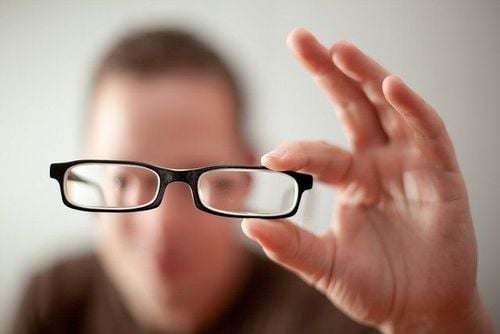This is an automatically translated article.
Fibromyalgia of the sternocleidomastoid muscle in infancy is a cause of congenital torticollis. Children will be treated with rehabilitation therapy for sternocleidomastoid fibrosis, combined with surgery if necessary to correct this condition.
1. What is sternocleidomastoid sclerosis? In humans, the sternocleidomastoid muscle is shaped like a long filament, starting behind the ear and running down near the medial head of the ipsilateral rib, just in the middle of the chest, at the sternal cavity. The cause of neck torticollis due to fibrosis of sternocleidomastoid muscle in children is due to poor posture in the uterus (found in babies born in the breech position, the chord is wrapped around the neck,...) leading to blood vessels supplying the sternocleidomastoid muscle. compression, causing fibrosis. Or there are cases of difficult birth, blood vessels in the muscle are broken, causing bleeding, from the fibrous blood clot causing contraction of the sternocleidomastoid muscle group.
2. Baby has fibrosis of sternocleidomastoid muscle causing neck curvature 2.1. Early signs The following are early signs of sternocleidomastoid fibrosis after birth until the baby is 3 months old:
There is a tumor in the sternocleidomastoid muscle with the following characteristics: at birth, feeling that the tumor is growing rapidly in the first month, the tumor density is from slightly firm to very firm, slightly moving along the sternocleidomastoid muscle, without heat, redness or pain; Children have limited range of motion in the neck, usually appearing about 2-3 months after the tumor. The baby's head is tilted to the side with the fibrous mass, limited to the healthy side, and limited to 2 sides.

Xơ hóa cơ ức đòn chũm ở trẻ nhỏ là một nguyên nhân gây vẹo cổ bẩm sinh
2.2. Late signs Early signs of sternal fibrosis when the child is 3 months old if untreated or improperly treated:
The child has the same tumor as in the previous stage but the density is the same. much stronger; The baby has a torticollis, the head is tilted to the side with the tumor, limited mobility of the cervical spine (difficulty tilting the head to the healthy side or turning the head to the sides); Children with cervical scoliosis, deformed cervical vertebrae; The baby has crossed eyes, atrophy of half of the face on the side with fibrosis of the sternocleidomastoid muscle.
3. Diagnosis of scoliosis due to scleroclavicular fibrosis in young children The doctor needs to perform necessary diagnostic methods such as:
Ask the patient and perform a clinical examination; Tumor amniocentesis: In the early stage, red blood cells can be detected, in the later stage, fibrous cells are detected in the tumor, no polymorphonuclear leukocytes or malignant cells; Ultrasound: The first stage detects fluid (hemorrhage), the later stage shows fibrous tissue; X-ray of the cervical spine: Can see images of scoliosis in children who are detected late, with contracture of the sternocleidomastoid muscle. Diagnosis is based on clinical findings and results of ultrasound and cytology. Need to differentiate with conditions such as: lymphadenitis, neck tumor, sternoclavicular myositis, hemangioma, rickets caused by rickets.
4. Treatment of scoliosis due to sternocleidomastoid fibrosis in children Congenital torticollis is a condition that can be effectively treated. Without early intervention, it can lead to postural flattening, causing the sternocleidomastoid muscle on the affected side to contract, which cannot be recovered and requires surgery.
4.1 Rehabilitation treatment of sternocleidomastoid fibrosis The principle of treatment is early intervention right after birth or after detecting fibroids in children. The mother should be instructed to let the child exercise at home during the first 3 months. At the same time, combine with routine examination after 1 - 2 - 3 months until the disease is cured. If the results of home treatment are poor, then it can be treated at the rehabilitation department after the child is 3 months old.
The goal of rehabilitation is to soften the fibrous mass, maintain range of motion of the cervical spine and prevent secondary deformities from occurring in the craniofacial and cervical spine.
Rehabilitation methods include:
Heat therapy
Infrared irradiation 15 minutes/time x 1-2 times/day in the neck on the affected side. Maintain the course of treatment for 10-15 days.
Electrotherapy
Ultrasound treatment 10 minutes/time/day in the affected side of the sternocleidomastoid muscle. Maintain the course of treatment for 10-15 days.
Mobility therapy: Perform exercises:
Exercise therapy
1: Massage, press on the sternocleidomastoid muscle mass. First, put the child on the family's lap, the child's shoulder touches the edge of the thigh, the child's head is supported by the therapist's hand, the neck is stretched, tilted to the healthy side, the child's face is turned to the side with the fibrous mass. Then, one hand of the technician fixed the shoulder joint and hip joint, the other hand used the thumb or index finger and middle finger to press on the fibrous mass in a clockwise direction. Time taken is 5-10 minutes x 6-8 times/day. Pay attention not to rub on the skin to avoid causing redness and pain for the baby.
Physical therapy exercise
2: Stretch the sternocleidomastoid muscle. First, place the patient in the same position as in exercise 1. Then, with one hand of the technician, fix the patient's shoulder and hip joints from behind, pulling the shoulder joint slightly toward the hip. With the other hand in front of the child's face so that the thumb rests on the angle of the jaw, the other fingers are placed on the mastoid part, gently resting the lower part of the hand on the child's head, pulling down gently and slowly. Hold for about 30 seconds, then release and repeat. Time taken is 5-10 minutes x 6-8 times/day. Note that massage and stretching should be performed alternately during the treatment.
Therapeutic movement exercise
3: Postural stretching. Breastfeed the baby on the opposite side to the sick side to stimulate the baby to turn his or her head to the sick side, help stretch muscles, increase neck range of motion. For example, a baby with right fibromyalgia will feed on the mother's left breast. So the baby is lying on his side, his head is tilted to the good side, the sick side is below. When sleeping, the baby's head should be placed in a neutral position.
*Note: Do not perform the exercises without expertise; continue to perform the above 3 exercises until the child is completely cured; only performed when the tumor is not hot, red, painful; Stretch gently and slowly, do not do it suddenly; do not perform the technique if the child cries or resists; should practice before feeding the baby to avoid vomiting; If you find that the child has difficulty breathing, cyanosis, stop exercising immediately.

Vẹo cổ bẩm sinh là một tình trạng có thể điều trị hiệu quả
4.2 Surgery Pediatric patients are indicated for surgery if:
The child is over 2 years old, has severe torticollis, and other treatments are not effective; The patient's sternocleidomastoid muscle was contracted short and firm; The child cannot turn the neck to the side with the fibrous muscle mass. After surgery, the child wears an orthopedic device which is a soft neck belt, combined with movement therapy to keep the head in an intermediate position.
4.3 Follow-up and re-examination Take the child for regular check-ups once a month until the tumor disappears completely; Children with ineffective home treatment need to be treated in a hospital; After 12 months of ineffective treatment, an orthopedic specialist should be examined. Cervical sclerosis in children is not an uncommon condition. The patient's family should pay attention to monitor the baby's health, strictly follow the doctor's recommendations to ensure effective and safe treatment, and help the baby recover movement soon.
Please dial HOTLINE for more information or register for an appointment HERE. Download MyVinmec app to make appointments faster and to manage your bookings easily.













